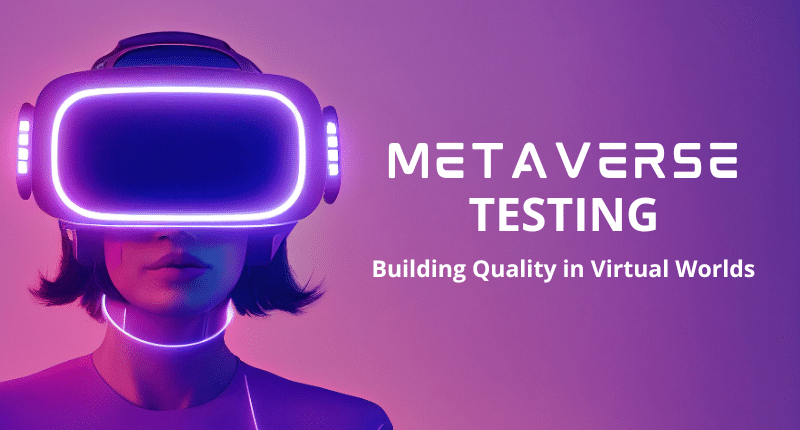In a rapidly evolving digital landscape, the metaverse is emerging as a groundbreaking concept, promising immersive virtual experiences and interconnected worlds. As we navigate this uncharted territory, ensuring the quality of these virtual environments becomes paramount. This blog explores the intricacies of testing for the metaverse and strategies to build quality in these dynamic virtual worlds.
Understanding the Metaverse: A New Frontier for Testing
The metaverse encompasses a diverse range of virtual realities, from augmented and virtual reality to persistent digital spaces. Testing in this environment involves validating not just software functionality but also user experiences, interactions, and the seamless integration of various elements. To achieve this, a comprehensive testing approach is crucial.
Key Challenges in Metaverse Testing
Testing for the metaverse presents unique challenges, including:
- User Experience Testing: Assessing user experiences in diverse virtual scenarios, considering factors like immersion, responsiveness, and ease of interaction.
- Cross-Platform Compatibility: Ensuring seamless transitions between different virtual worlds, requiring compatibility testing across platforms and devices.
- Security and Privacy: Addressing potential vulnerabilities and ensuring user data privacy in interconnected digital spaces.
- Performance in Dynamic Environments: Testing for performance under dynamic conditions, considering the ever-changing nature of virtual worlds.
Strategies for its Effective Testing
- Scenario-based Testing: Develop test scenarios that mimic real-world user interactions, evaluating how systems respond to diverse inputs and user behaviors.
- Interoperability Testing: Validate the seamless flow of data and assets between different virtual worlds, ensuring interoperability across the metaverse.
- Security Testing: Conduct thorough security assessments, identifying and mitigating potential risks to protect user data and maintain a secure metaverse environment.
- User Behavior Simulation: Use AI-driven simulations to emulate user behaviors within virtual environments, enabling a deeper understanding of system responses.
The Role of Automation in Metaverse Test
Given the scale and complexity of the metaverse, test automation becomes indispensable. Automated testing tools can streamline repetitive tasks, accelerate test cycles, and provide faster feedback on changes, ensuring rapid iteration and improvement.
Conclusion: Shaping Quality in the Metaverse
As the metaverse continues to evolve, robust testing practices will be fundamental in shaping a high-quality virtual experience. Embrace the challenges, leverage innovative testing strategies, and contribute to building a metaverse that thrives on quality, user satisfaction, and seamless interactions.
Call to Action:
Ready to ensure the quality of your metaverse application? Explore our advanced testing solutions tailored for virtual environments. Contact us to discuss how we can enhance the quality of your metaverse project.




